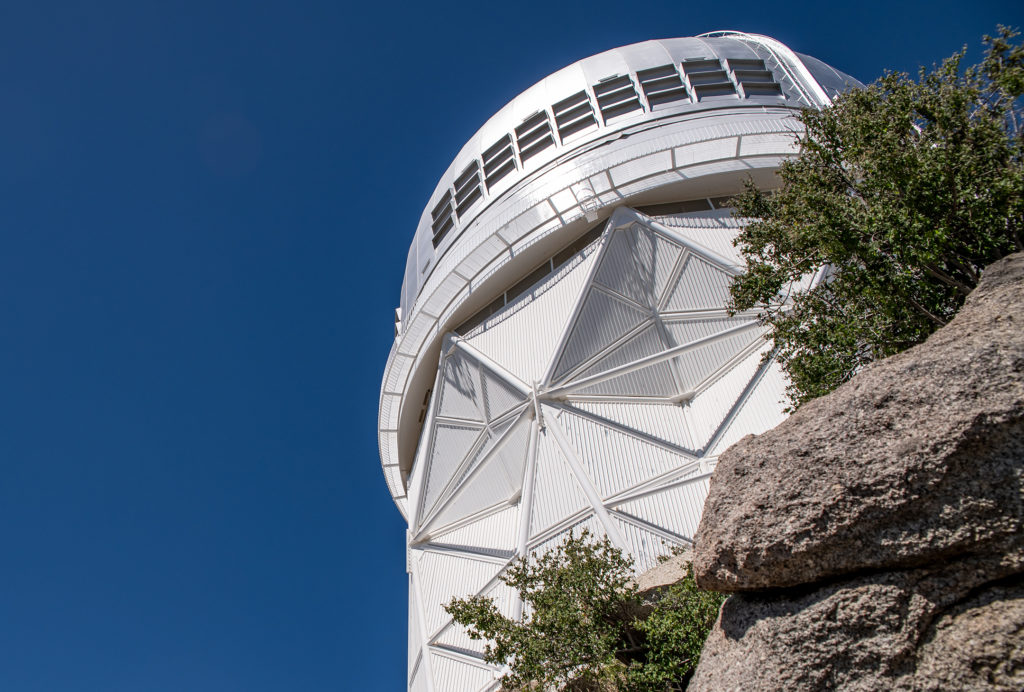
Since the beginning of the 20th century, our understanding of the universe and our place in it has changed dramatically. From understanding that our solar system is in a galaxy amongst many and that our universe is expanding, we have developed a model that can explain to great accuracy our observations of the universe, how it evolved from an earlier, hotter, and denser period to form the web of galaxies we observe today.
However successful it has been, it leaves some fundamental questions unanswered. Two of these concern the universe’s energy budget: only about 5 percent of its total mass and energy can be accounted for by ordinary matter; 27 percent is dark matter that can only be inferred by its gravitational effects; and 68 percent is dark energy, responsible for the accelerating expansion of the universe.
By accurately measuring the expansion history over the past 11 billion years, DESI’s scientific goal is to constrain possible models of dark energy. In order to accomplish this goal, DESI will measure the position and receding velocity of about 40 million galaxies. These galaxies will have been pre-selected by studying deep images of the DESI survey area, or footprint, taken during observing campaigns before DESI starts up.
We would like to thank the following for providing the translations of the DESI science pages:
- Spanish: Alma Gonzalez, Jorge Cervantes, and Luis Ureña
- French: Pauline Zarrouk and Satya Gontcho A Gontcho
- Korean: David Parkinson, Okboo Lee, Hee-Jong Seo, Ho Seong Hwang, and Minji Oh
- Chinese (simplified): Jinyi Yang and Duan Yutong
- Georgian: Lado Samushia and Nino Tchankvetadze
- Portuguese (Brazilian): Felipe Andrade-Oliveira and Anderson Souza
- German: Samuel Brieden, Boris Gaensicke, Michael Schubnell, and Johannes Lange
- Catalan: Marc Manera and Andrea Muñoz
- Italian: Antonella Palmese and Chiara Circosta
- Ukrainian: Sam Moore







